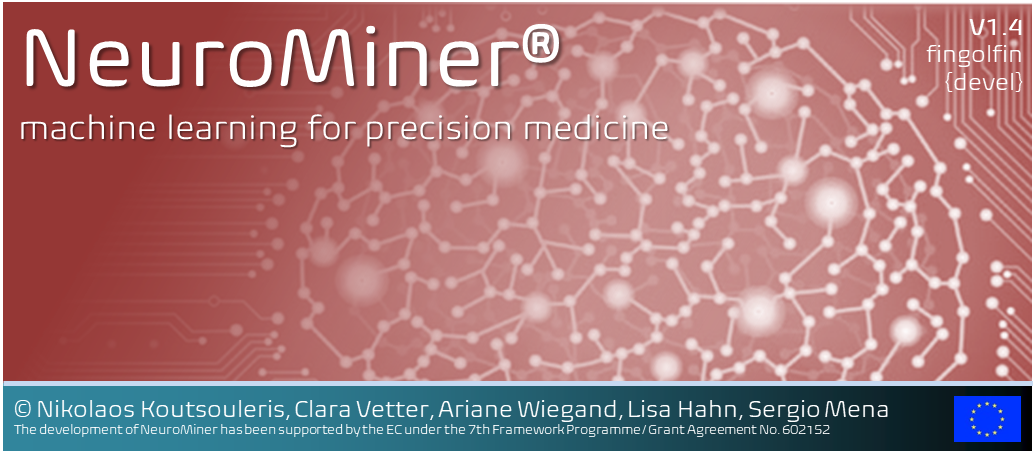NeuroMiner 1.4 (10/2025) — Release notes#
Highlights#
Hyperparameter search: Simulated Annealing and Bayesian Optimization
Ensemble optimization: Diversity‑aware objectives (vote‑entropy, Q/kappa diversity, bias–variance) with regularization; greedy forward/backward search
New models: TensorFlow (classification & regression)
Dimensionality reduction: new extraction range modes (geometric, power) and component‑matching (Hungarian algorithm)
Cross‑validation: small‑batch safeguards (drop n=1 batches, move N≤5 to test folds) + cycle generation log
Preprocessing: robust F‑score (imbalance‑sensitive, bootstrap, mean/median, MEX), skewness correction (log‑based, Box‑Lambda, Yeo–Johnson), weight‑vector utilities, thresholding Nuisance correction: ComBat for unseen batches supporting external validation of model pipelines using ComBat correction.
Visualization: new Overlay NIfTI Viewer, calibration curves & DCA, non‑imaging bar‑plot improvements, FeatureRelevanceGUI in Result Viewer
Adaptive and Natural-Stopping Wrappers for Greedy Feature Search: The gready feature selection wrappers have been signficantly upgraded to be more intelligent, automatic, and robust. The update replaces the old system of manually-tuned, arbitrary stopping thresholds with a new adaptive framework.
Compatibility#
NM structure, data input and training framework fully backward compatible with NM 1.3 templates.
For visualisation and ensemble-based models, we recommend reinitialising analyses with the new settings.
Migration tips#
Re‑run visualization to take advantage of calibration/DCA and the new NIfTI viewer.
If you used custom DR grids, consider switching to geometric/power ranges for broader coverage with fewer points.
Prefer component‑wise back‑projection for DR‑based models (PCA/ICA/NMF/PLS).
Component‑wise maps preserve the latent structure and typically show higher sensitivity than aggregated maps, which can hide signal due to cross‑component covariance and sign cancellation. In symbols: (w_{\text{agg}}=\sum_{c} w_c,v_c) vs. (w^{(\text{backproj})}_c = w_c,v_c). In NM 1.4, feature‑level inference is performed within each discovered component with FDR control per component, and selection is mirrored under the null during permutation testing. See Visualization Pathways in NM 1.4 for details.
How to migrate your figures quickly#
Where you previously reported only an aggregated map, add a component‑wise panel (per significant component) and report per‑component q‑values.
Enable component matching & sign correction so the same component index refers to the same latent factor across CV folds.
For multi‑modal work, add modality‑level and component×modality (L_p) shares to show where signal comes from.

